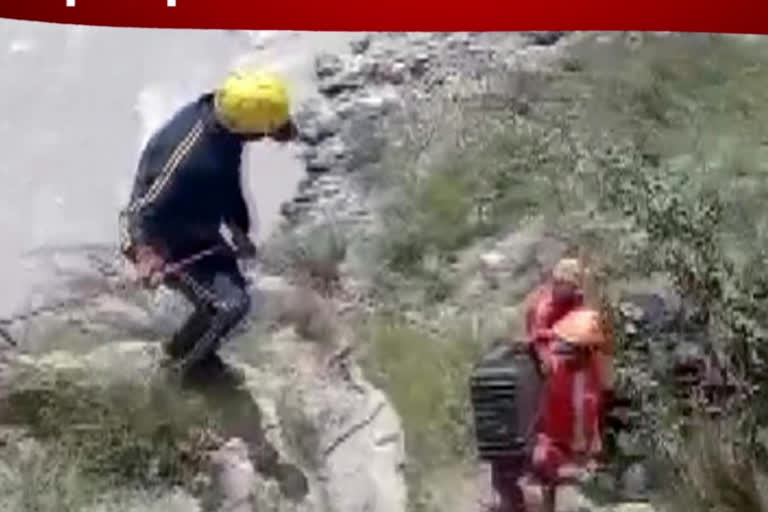Chamoli: Almost after a year of the Chamoli disaster, one more body was recovered from inside the tunnel at the NTPC hydropower project at Tapovan on Tuesday. The police have sent the body to Joshimath for postmortem. The body has been identified as that of Gaurav, a resident of Rishikesh who was posted as an engineer at the NTPC hydropower project.
After the horrific disaster in Raini village on 7 February 2021, many employees and labourers working in Rishiganga Power Project and NTPC Power Project died due to inundation. Around 64 dead bodies have been recovered by the Army, ITBP, NDRF and SDRF during the rescue operation inside the tunnel till now and near about 200 hundred people are told to be missing since the disaster. But still, as the debris inside the tunnel is being cleared rescue teams are finding more dead bodies.
Reason behind the Chamoli disaster:
Scientists from Wadia Institute of Himalayan Geology (WIHG) after an investigation found that a hanging glacier with rock mass had broken off in the Raunthi glacier catchment below Raunthi Peak from a height of about 5,600 meters. This piece of ice and rock had travelled about 3 kilometres downstream to reach the Raunthi stream at an altitude of about 3,600 meters, which is about 1.6 kilometres downstream from the mouth of the Raunthi Glacier.
According to scientists, the Raunthi catchment witnessed the occurrence of avalanches and debris flows between 2015-2017. These events did not cause any major disaster downstream. But major changes in the catchment led to the accumulation of loose morainic debris and sediment in the glacial region of the Ronthi stream.
On 7 February 2021, ice, glaciers, rock fragments, moronic debris etc. got mixed together, which came down about 8.5 km towards the Ronthi stream and blocked the Rishiganga river at an altitude of about 2,300 meters. Due to this, a water lake was formed and the heavy rain lashed the lake got busted and destroyed the 13.2 MW hydroelectric power project located on the Rishiganga river.



